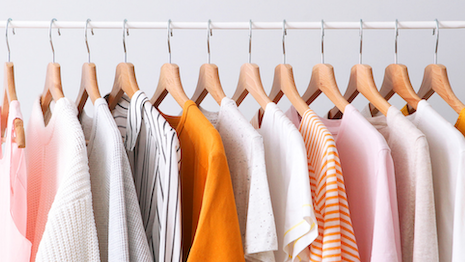 Traditional tactics like points programs are simply not cutting it. Image credit: Clarus Commerce
Traditional tactics like points programs are simply not cutting it. Image credit: Clarus Commerce
After the global disruptions of 2020, consumer demand for personalized, instant benefits provided by premium loyalty programs is growing.
Conversely, as they discover new products and services online, maintaining consumer loyalty is becoming more difficult, requiring more than just point accumulation. To better understand consumer mindsets and behavior, Clarus Commerce surveyed 2,500 U.S. individuals about their shopping habits and expectations for loyalty programs and analyzed the benefits customers expect and how those expectations have changed throughout the pandemic.
Customer loyalty
More than two-thirds, 68 percent, of customers agree their loyalty is more difficult to maintain than before, up from 64 percent in 2020.
Consumers are also increasingly willing to pay for the benefits they want from retailers, as 76 percent would pay for a premium loyalty program.
Further, 70 percent of consumers currently belong to a premium loyalty program, compared to 66 percent in 2020 and 58 percent in 2019. For the remaining months of 2021, Clarus Commerce expects premium loyalty program subscriptions to grow.
Demographically, Gen Z consumers are more likely to have premium loyalty memberships at 70 percent, than other memberships at 63 percent.
The top seven categories consumers are willing to join a premium loyalty program for are grocery, apparel and accessories, health and beauty, gas, travel and hospitality, entertainment and home decor.
Premium loyalty members are highly loyal to their favorite retailers, like brand ambassadors who advocate for the brand by word of mouth.
 Premium loyalty programs offer immediate benefits that can be used at any time in exchange for a membership fee. Image credit: Clarus Commerce
Premium loyalty programs offer immediate benefits that can be used at any time in exchange for a membership fee. Image credit: Clarus Commerce
Ninety percent say they are likely to choose a retailer where they are a premium loyalty member over one offering a lower price, and 88 percent of premium loyalty members say they are likely to recommend a retailer with valuable premium loyalty benefits to a family member or friend.
Almost half of consumers, 49 percent, have tried shopping with a new brand since March 2020, as the shift to online shopping made it easy to order with a single click.
Even among the global pandemic, premium loyalty members stuck with their favorite brands, as 73 percent of consumers shopped more with retailers whose loyalty programs they were part of during the pandemic.
In 2020, 94 percent of premium loyalty members in 2021 shopped with their favorite retailers at least once a month; however, the percentage of members who shopped once or more per week grew from 58 percent in 2020 to 67 percent in 2021.
Almost two-thirds of consumers, 64 percent, said it would entice them to invest in or renew a premium loyalty program.
Other benefits cited as important included instant discounts that customers can use when they shop and free giveaways, at 53 and 47 percent, respectively.
Clarus Commerce recommends that retailers with loyalty programs must innovate their program offerings, designing unique experiences for customers instead of falling back on generic loyalty initiatives.
Of the 71 percent of consumers who belong to traditional loyalty programs, a majority, 68 percent, belong to 1-4 programs, and 31 percent belong to 5 or more programs.
However, many of these consumers are not using their traditional loyalty programs frequently enough to get significant benefits out of them, such as accumulating points.
 Through the new American Express Premium Private Jet Program, Wheels Up offers exclusive membership discounts and flight credits to Platinum Card members. Image credit: Wheels Up
Through the new American Express Premium Private Jet Program, Wheels Up offers exclusive membership discounts and flight credits to Platinum Card members. Image credit: Wheels Up
Almost three-quarters of consumers use 50 percent of those programs or less on a monthly basis, and 5 percent do not use any of those programs on a monthly basis.
Of the consumers who belong to traditional loyalty programs, 81 percent say it is likely they would join a retailer’s premium loyalty program if they were already part of its traditional loyalty program, assuming the benefits were valuable, a 14 percent increase from 2020.
Luxury loyalty
As the COVID-19 pandemic created many obstacles for the luxury sector in terms of consumer engagement, brands and retailers continue to amp up their loyalty program benefits in an attempt to maintain the business of their preferred customers.
This spring, U.S. retailer Bloomingdale’s introduced new features to its Loyallist program, making it easier for customers to navigate the rewards program and earn more perks.
After being the first luxury fashion retailer to introduce a tender neutral loyalty program, Bloomingdale’s has now opened all of its tiers to tender-neutral Loyallists, enabling any customer to earn rewards regardless of payment type (see story).
Similarly, U.S. department store chain Saks Fifth Avenue updated its membership and rewards program SaksFirst to strengthen client loyalty.
The retailer furthered its commitment to deliver a personalized and easy experience for customers through a revamped credit card and rewards program. With new enhancements tailored to how customers shop, SaksFirst credit cardholders now have easier access to more rewards (see story).